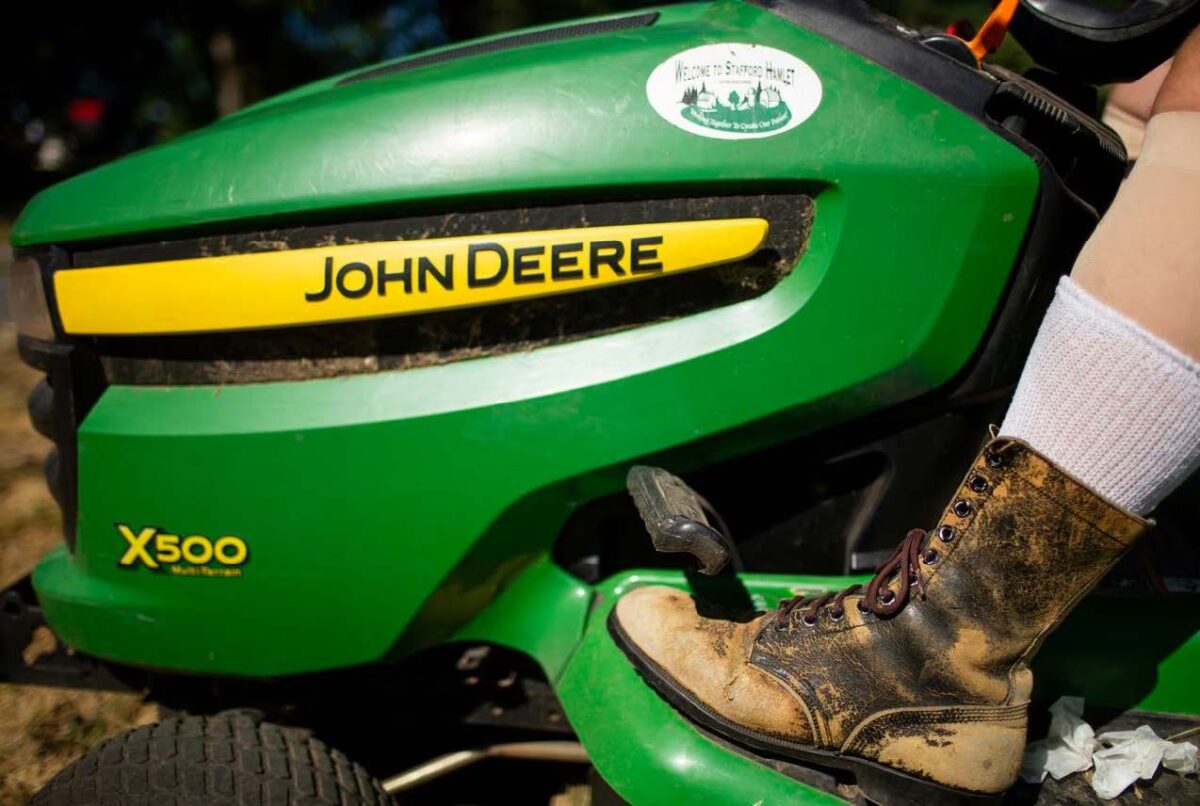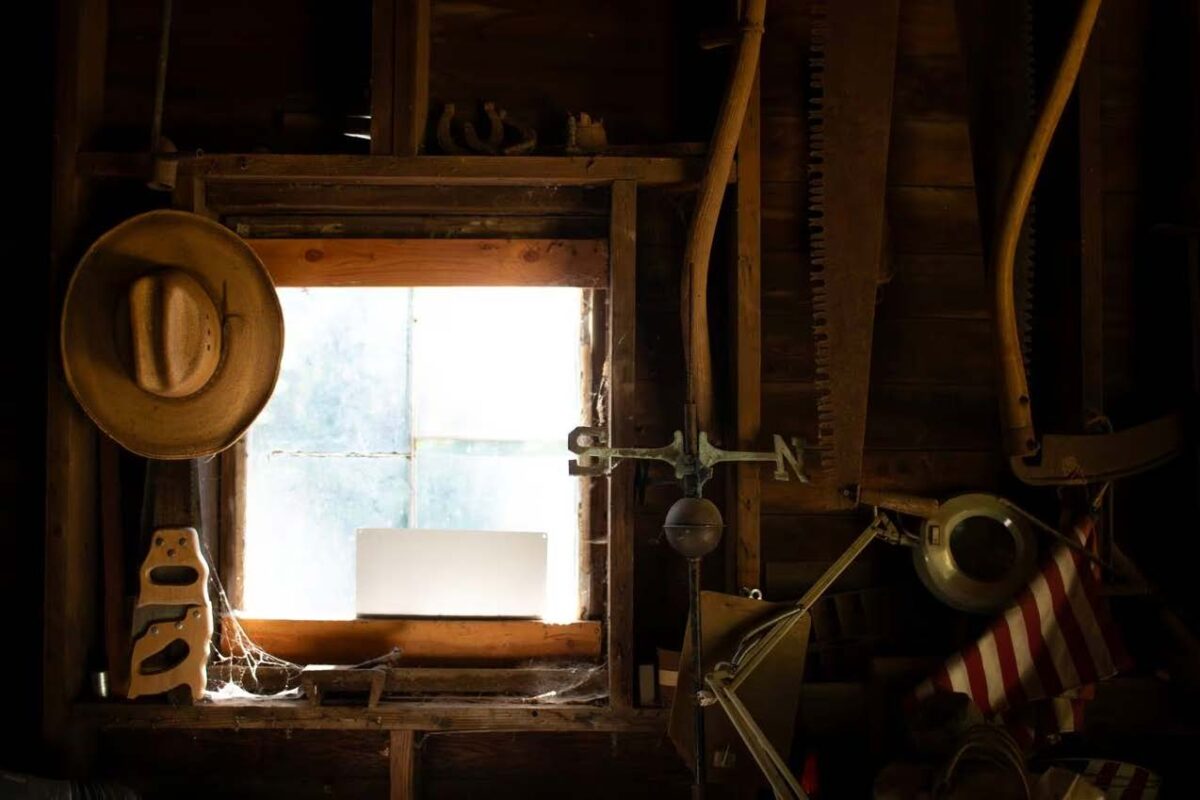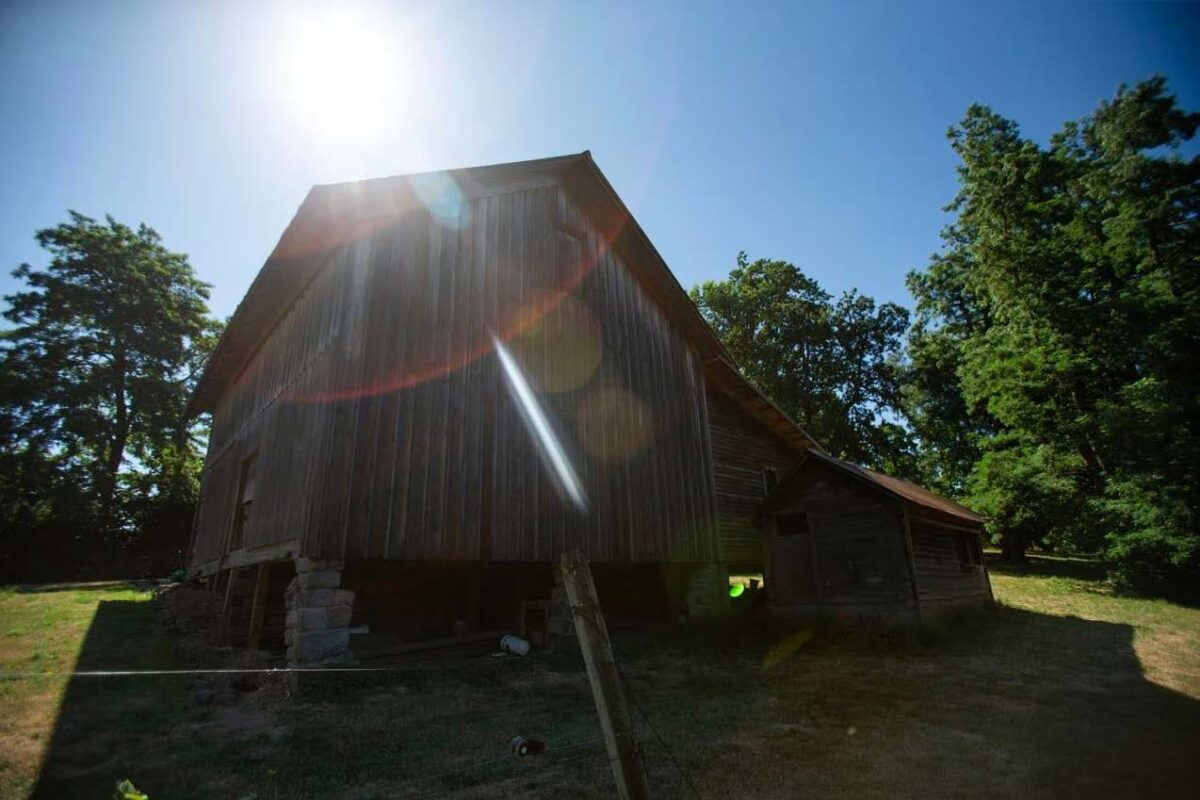Aging farmers toil well past retirement, with no heirs or desire to leave land they’ve tended for decades
By Cara Nixon
This story was originally published in The Oregonian on July 17, 2023.
As distinct as the sight and smell of his grandparents’ Lake Oswego farm was, what Rick Cook carried with him was the sound. Every Christmas and Easter and during long summer stretches, the crunch of tires on gravel signaled that his family’s station wagon had turned into the driveway and that next, his grandmother would be flipping on the light at the old farmhouse.
“To this day, there’s times I’ll turn in and get a flashback,” said Cook, who is nearly 70.
During his family’s frequent visits from Santa Barbara, California, his grandparents would tell stories about his great-grandparents, who moved from Ohio to Oregon in the early 1900s, working the land for Mr. Shipley, who built the barn on the farmstead in 1860 and the house in 1862.
Cook’s great-grandfather bought 130 acres from Shipley, settling on a farmstead that was home to cattle, sheep and hogs, and the grain, wheat and alfalfa that fed them. As family moved away and farming grew less profitable over the years, Cook’s grandfather, father and uncle had to sell much of the original land, bringing the Shipley-Cook Farmstead down to six acres.
Cook worries more of his land could be lost to what he calls “the Portland creep” as dense development draws nearer. His property abuts the Portland region’s urban growth boundary, the area where dense development is allowed. The farm is on land designated as an urban reserve — land that could be tapped to expand the urban growth boundary in the future.
When Cook took over the farm in 1993, he worked to preserve the remaining property, an Oregon Century Farm that is listed on the National Register of Historic Places.
“We’re trying to hold onto every blade of grass we’ve got left,” he said.
“We” is really just Cook, who never married or had children to take over the farm, leaving plans of succession up in the air.
Cook never plans to leave the farm, no matter whom it gets passed on to. His ancestors are buried at the nearby Pioneer Cemetery, but Cook jokes he’d rather be buried at the foot of the flagpole on the farmstead.
“Then I’ll be here forever,” he said.
Cook is deeply connected to his land and would find it hard, as he ages, to move closer to caregivers or health care. That’s not unusual. Many farmers conflate their identities with their work, said Nellie McAdams, executive director of Oregon Agricultural Trust. That makes it harder for them to let go of their jobs and land, even when their physical health demands it.
Researchers at Texas A&M University found that farmers experience a unique psychological connection to their land. Their study, published in The Social Science Journal in 2021, was based on interviews with 20 rural Texas landowners ranging in age from 29 to 82. The researchers found that participants experienced a deep sense of connection to and responsibility for their properties and that their land provided opportunities for community involvement and family traditions.
One of the researchers, Evgenia Spears, was most surprised by their personification of the land, seeing it almost as a parent or a caretaker.
“‘It provides me food, water and everything,” Spears said they told the researchers. “This is my business partner because if I treat it right, it treats me right. If I take care of my land the right way, then it will reward me for my work, and I will be able to harvest quite a bit.’”

Rick Cook, seen through the window of a barn built in 1862, tends to his farm, known as the Shipley-Cook Farmstead, south of Lake Oswego the morning of Thurs., July 13, 2023.Dave Killen / The Oregonian
Changing hands
The Oregon American Planning Association reported in 2017 that with the average age for a farmer approaching 60, up to 10.45 million acres of Oregon’s farmland likely would change hands in the next 20 years. And the question of succession weighs on a lot of farmers.
McAdams witnessed this firsthand with her grandparents. She grew up spending weekends on her family’s 400-acre farm in Gaston, where her grandparents produced a variety of crops like wheat, cherries and prunes.
When McAdams was a teenager, her grandfather, Kenneth, had a stroke. Around the same time, her grandmother, Lisbeth, required surgery, which the McAdams family believes led to a decline in her cognitive health.
Prior to their health failing, Kenneth did the farm labor and Lisbeth kept the books. When it became clear her grandparents could no longer manage on their own, McAdams’ father, who was an attorney, and her mother, who was a teacher, took the farm on as second jobs. Kenneth and Lisbeth remained on the farm receiving care.
“I think my grandpa just couldn’t envision going anywhere else, and my dad felt like it would be cruel to take him from the farm,” McAdams explained.
Even when her grandfather wasn’t very mobile, McAdams said he would sit and look out the window, telling her dad about the weather and what he should do on the farm to accommodate it.
“He was really just so attached to the landscape, and that landscape really kept him alive,” McAdams said.
The McAdams family spent over $1 million dollars on care for Kenneth and Lisbeth during the last 16 years of their lives. Their care essentially cost the amount of the farm’s revenue for that time period.
Because her parents had second incomes, McAdams said they didn’t feel the financial burden as much, but there was some deferred maintenance around the farm.
“I know a lot of farmers don’t want to retire ever,” she said. “They might be on all of the business documents and everything until they die.”
Lowell Bickle farms outside of Grants Pass, and though he’s approaching 80, he shows no sign of slowing down. The farm, which he bought in 1972 and runs on his own “99.9% of the time,” covers 30 acres. He raises about 20 sows, tends to acres of sweet corn and grows flowers and hemp crops in greenhouses.
Both he and his wife, Julie, retired from teaching — he taught agriculture, and she taught art. But Bickle didn’t retire from farming, and his wife still runs an art studio.
Bickle’s day starts between 5 and 6 a.m. and ends between 5 and 7 p.m. He tends to the greenhouses, feeds and checks the sows, scoops manure and does any other chores that might come up. During the farrowing season — when the sows give birth to piglets — he makes the quarter-mile trip from his house to the barn three times a night to check on them.
Bickle knows the farm eventually will go to his son, who is an art teacher and works in wildlife management, though he’s unsure what his son will do with the land. He still finds the farming lifestyle enjoyable, save for the injuries he’s experienced in recent years, including breaking his hand and tearing his ACL.
A few years ago, he had three back operations in one year. Both he and his wife, who has a disability, were incapacitated, so he had to call on his son and former students to work the farm until he recovered.
These physical setbacks don’t worry him too much, though — he said it’s just a matter of “making things easier for yourself and scaling back.” He plans to decrease the number of sows they have to 15 by winter.
The farm is a community center of sorts. There’s a tradition of students cutting flowers for their weddings. Recently, one of Bickle’s first classes cut flowers for their 40-year reunion.

Rick Cook tends to his farm, known as the Shipley-Cook Farmstead, south of Lake Oswego the morning of Thurs., July 13, 2023.Dave Killen / The Oregonian
Finding future owners
For farmers who are still trying to develop a plan, farm link organizations in Oregon and many other states can help.
These organizations assist farmers and ranchers with such things as land access and conservation loans, conservation planning and technical assistance, and succession planning. Most importantly, they link land sellers with land seekers.
Liya Schwartzman, senior program manager at California Farm Link, said it can be difficult for landowners to plan for succession without outside help, especially when their only options are selling to non-family owned agribusinesses, or institutions that don’t share their values for what to do with the land.
California FarmLink offers a year-long succession planning course for farmers and ranchers who have identified a successor. For those who haven’t, the organization provides a portal where landowners can post property listings for land seekers to peruse, and land seekers can post profiles for property owners to view.
Schwartzman said both land seekers and owners face challenges. For land seekers, there’s not enough land for sale, she said, in part because farmers don’t know how much demand is out there.
“Many landholders, individual and institutional, are not aware of the land access crisis and/or do not know how they can be a part of the solution,” Schwartzman said.
On the other side, for landowners who have put their blood, sweat and tears into the property, handing it over isn’t easy.
“There’s a lot of folks who have a passion for these lands for one reason or another,” Schwarztman said. “And so finding the right person to take that over, it can be a real challenge and it can take a while.”

The view from inside a barn built in 1862 on the Shipley-Cook Farmstead, south of Lake Oswego the morning of Thurs., July 13, 2023.Dave Killen / The Oregonian
‘A special place’
The sign marking Rick Cook’s land as a Century Farm won’t protect it from future development. In 2007, a quarter of an acre was purchased by Clackamas County for a safety roundabout project. Cook said he did not willingly sell this land, and that it resulted in a loss of 100-150 grapevines.
Beyond other projects infringing on the farmstead, Cook’s biggest concern is finding a successor as committed as his family has been to keeping the land green and growing. But no one, he said, “has stepped up to say, ‘Yeah, I’m gonna be the next Rick.’” And if someone did want to buy it, Cook said he’d have reservations.
“It has meant so much to the family,” he said. “I’m not gonna be the guy that sells it.”
It’s been the setting for family weddings, church services and Fourth of July cookouts. It’s not just a farm for Cook but a landmark, and Cook’s unwillingness to leave it is tied to his fear of losing it.
“It’s not just our family, but it’s the community,” he said. “It’s a special place.”
Cara Nixon is a writer with the Investigative Reporting Program at the UC Berkeley Graduate School of Journalism. She reported this story through a grant from The SCAN Foundation.

A barn built in 1862 on the Shipley-Cook Farmstead, south of Lake Oswego the morning of Thurs., July 13, 2023.Dave Killen / The Oregonian


